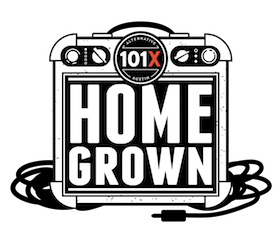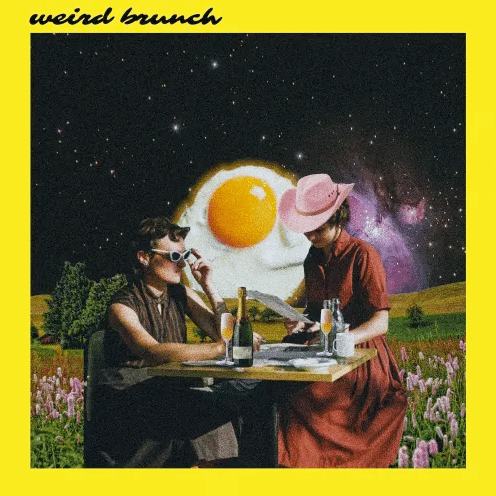Raised Eyebrows: Crosstalk – Part 1 (Randy)
Crosstalk generally refers to a signal affecting another nearby signal. Take that statement and apply it to a band with two or more guitar players that do not participate in the traditional lead/rhythm scenario, and you’re beginning to get the idea.
In 1967, San Francisco band Moby Grape consisted of 3 guitar players, Jerry Miller, Peter Lewis, and Skip Spence. While Miller was considered the “lead” guitarist, all three walked the line between lead and rhythm, often playing off of each other in something the group dubbed Crosstalk. This term never really caught on, but is a perfect descriptor for a bunch of hard to categorize bands that have existed throughout rock ‘n’ roll history. So, I’m proposing to bring the term back from extinction to help identify the groups that personify the phrase and to pinpoint the players that define it.
—
Moby Grape – Fall On You (1967)
We start with the band that coined the failed catchphrase, the one and only Moby Grape. From their illustrious self titled debut comes Fall On You. The song’s motorik-like drums anchor the beginning guitar riff that is then harmonized when the vocals jump in. This is ground zero, folks.
—
The Grateful Dead – Morning Dew (5/23/72: Lyceum Ballroom – London England)
The Grateful Dead were another band emerging from San Francisco at the same time as Moby Grape. In fact, it was Jerry Garcia who convinced Moby Grape’s Jerry Miller and drummer Don Stevenson to move to SF in the first place. Garcia and Weir are prime examples of the Crosstalk dynamic. Both figures found a way to organically play off and/or against each other without taking away from the song. In truth, their interplay is what made some of the band’s more average songs spectacular. The tune chosen here comes from Europe ‘72: The Complete Recordings.
—
Neil Young with Crazy Horse – Down By The River (1969)
The combo of Neil Young and Danny Whitten is one of magic. Rarely do you find two players who matched so well. In 1969, Young and Whitten, along with bassist Billy Talbot and drummer Ralph Molina, stretched out on an LP entitled Everybody Knows This Is Nowhere. The album featured two unprecedented guitar workouts: Down By The River and Cowgirl In The Sand. On Down By The River, Whitten and Young charge straight at each other, Whitten catching fire early around the 3:30 mark, while Young begins to really burn around 7:00. You can’t go wrong here, bro.
—
Lou Reed – Satellite of Love (1973)
On December 21, 1973, Lou Reed took the stage of Howard Stein’s Academy of Music in New York City with a crack band that included guitarists Dick Wagner and Steve Hunter backing the former Velvet Underground frontman. The resulting performance yielded both 1974’s Rock ‘n’ Roll Animal and 1975’s Lou Reed Live. Here, Wagner’s and Hunter’s pyrotechnics skyrocket Reed’s already flamboyant songs to an excessive altitude. For those of you looking for mentions of Wishbone Ash, Thin Lizzy, or The Eagles as part of the Crosstalk conversation, I point to this performance as a representative of that sect. Work it!
—
Television – Marquee Moon (1977)
The Holy Grail of Crosstalk. Released by Elektra in February of ‘77, Marquee Moon continues to blow the mind of any person looking to go beyond the traditional operations of the electric guitar. The LP’s centerpiece title track remains Tom Verlaine’s and Richard Lloyd’s greatest achievement. Whether it’s the opening riff, the modal solos, that towering pre-chorus, or all of the above, there is something here for every misfit rock ‘n’ roller born after 1950.
—
The Soft Boys – Human Music (1979)
In 1979, The Soft Boys released an LP called A Can of Bees. The record fell somewhere between Captain Beefheart’s Moonlight On Vermont and John Lennon’s Meat City. That sounds pretty epic, right? The unique Fender clamour depicted here by Robyn Hitchcock and Kimberley Rew creates a splendid example of Cambridge Crosstalk.
—
True West – Look Around (1983)
True West could be considered a forgotten footnote to the Paisley Underground scene that caught fire in L.A. in the early 80’s. Whether the band had significant success or not doesn’t take anything away from the influential crossed lines of Richard McGrath and Russ Tolman. The band even cut demos with Tom Verlaine of Television at Bearsville Studios in 1983. The composition chosen here, Look Around, comes from that hallowed Verlaine session. The song was rerecorded in 1984 for the group’s only full length LP, Drifters. The track remains a choice example of True West at their Crosstalk zenith.
—
The Dream Syndicate – John Coltrane Stereo Blues (1984)
From Karl Precoda and his foam filled Harmony Rocket, to Paul Cutler and his roach clip guitar pick, to the explosive Jason Victor of The Miracle 3, Steve Wynn has always surrounded himself with killer players. Wynn may not always be the best singer, or even the finest foil, but he manages to write tons of songs that leave lots of room for some good old fashioned Crosstalk. This song is courtesy of Precoda and Wynn, from the underrated 1984 album Medicine Show.
—
The Feelies – Slipping (Into Something) (1986)
The team of Glenn Mercer and Bill Million are what makes The Feelies the legendary band that they are. The band cut their first LP, Crazy Rhythms, by playing their guitar parts directly through the board instead of through an amplifier (the engineer claimed that he would run the tracks through an amp later, but he never did). Could this kind of guitar playing without the sustain of an amp have created the jittery Hoboken sound? Who knows? What can be claimed is that the duo really know how to bounce off of each other, so much so that at times the listener can get lost on who is doing what. Now that’s Crosstalk! The cut here comes from The Good Earth, produced by Peter Buck in 1986.
—
Stream the entire playlist for Crosstalk – Part 1 anytime here. Join me next month as I follow Crosstalk from the 1990s to the present day.













